Having now fully explored the Malacalcyonacea Part 1 and Part 2, it’s time to turn our attention to its sister group, the order Scleralcyonacea. These clades are roughly equivalent in terms of species-level diversity, but whereas the malacalcyonaceans included many corals familiar to aquarists, the scleralcyonaceans are much more rarely seen in captivity. A large bulk of these corals are deepsea specialists, while many others favor cryptic ecological niches or are otherwise unsuitable for life in a glass box.
As discussed previously, there is no single morphological trait uniting the ~30 families of this lineage, and it is instead diagnosed by its molecular signature. Most of the former Calcaxonia is represented here, along with several groups of the former Scleraxonia, plus a few robustly built Soft Corals and all of the Sea Pens and Blue Corals. The common thread for these seemingly disparate groups is that their skeletons are quite rigid, something alluded to by the prefix scler (Greek, “hard”).

Cornulariidae
Cornularia is definitively known from a pair of species in the Mediterranean and South Africa, plus another suspected species from Western Australia. Colonies consist of small, sclerite-free polyps that, uniquely amongst the Octocorallia, secrete a protective outer sheath made of chitin (the same polysaccharide that lends rigidity to fungal cell walls and the exoskeleton of insects). In this sense, there’s some morphological similarity to the colony shape of a Hydroid or even certain Stony Corals. The basal position of this family within Scleralcyonacea hints at an ancient origin for this unusual and little-known bodyplan.
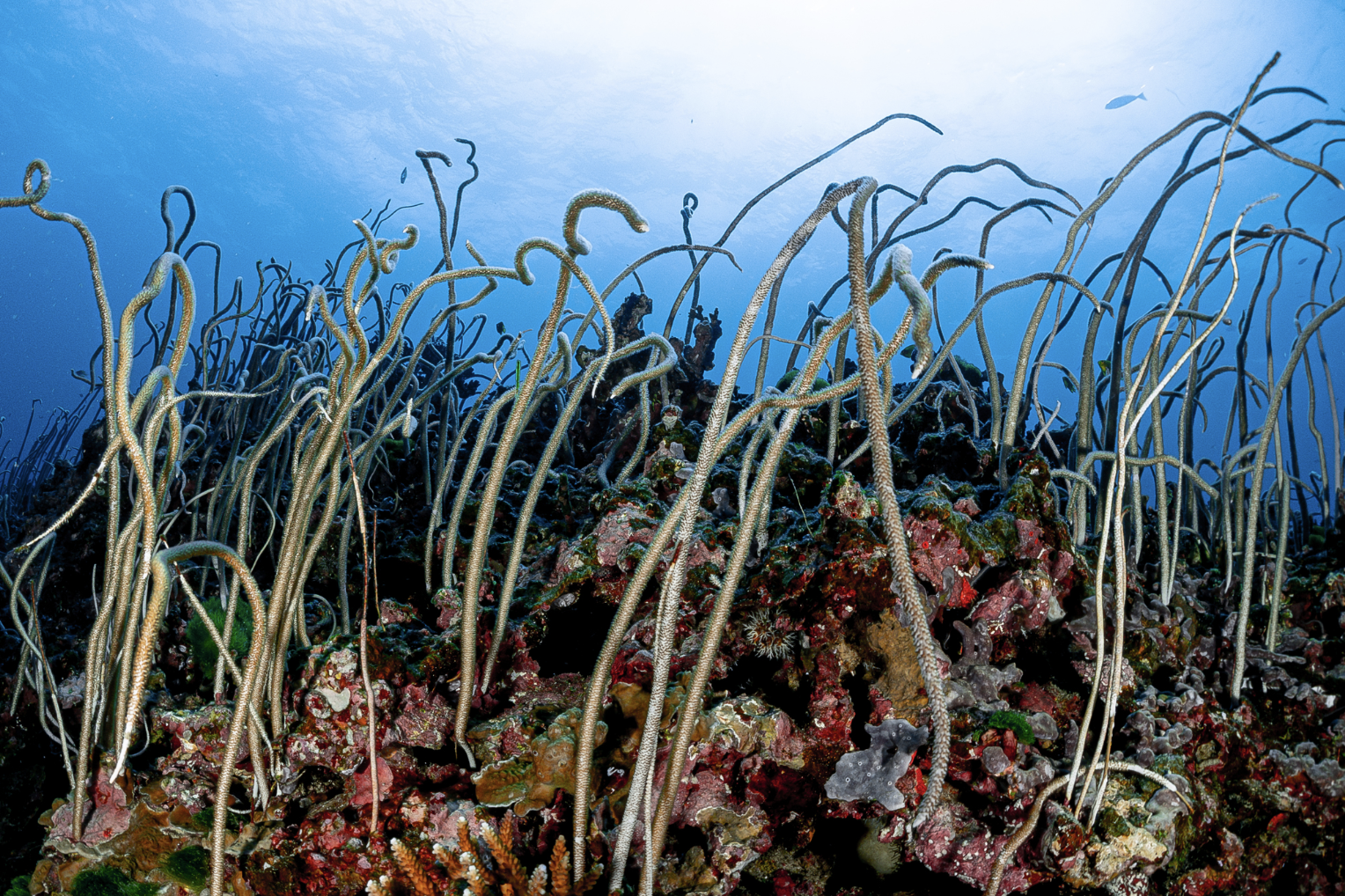
all rights reserved https://www.inaturalist.org/observations/92572206
Ellisellidae & Pennatuloidea
At first glance, these closely related groups don’t appear to have much in common, but a quick peak at the crystalline structure of their axial skeleton reveals a deeper connection—both have calcite arranged radially, rather than in concentric layers, as would be typical for other calcite-based Gorgonians. The ellisellids are a moderately diverse ex-Calcaxonia family with a worldwide distribution, generally becoming more abundant at mesophotic depths, though there is a single shallow, zooxanthellate species in the West Pacific, Juncea fragilis, that could likely be kept in aquariums.
The pennatuloids are better known as Sea Pens and were formerly classified as a separate order, owing to the unusual division of labor seen amongst the polyps within a colony, the central stalk of which is considered to be formed from an axial polyp (the “oozooid”). The 200+ species are currently grouped into 16 families, but there is still considerable taxonomic work to be done revising these. While the group is common and widespread across a broad range of ecosystems, relatively few occur on shallow reefs, and the few tropical zooxanthellate species (Cavernularia, Virgularia) are challenging to keep in captivity.
Chrysogorgiidae, Primnoidae, Keratoisididae, Isidoidae
These closely related families are likely to be unfamiliar to aquarists and divers, but they are usually the dominant Gorgonians in the deepsea. Most have a brittle axial skeleton of concentrically arranged calcite, but this becomes jointed with gorgonin in Keratoisididae, one of several groups referred to as Bamboo Corals. Very few of these occur at divable depths and none make their way into aquariums.
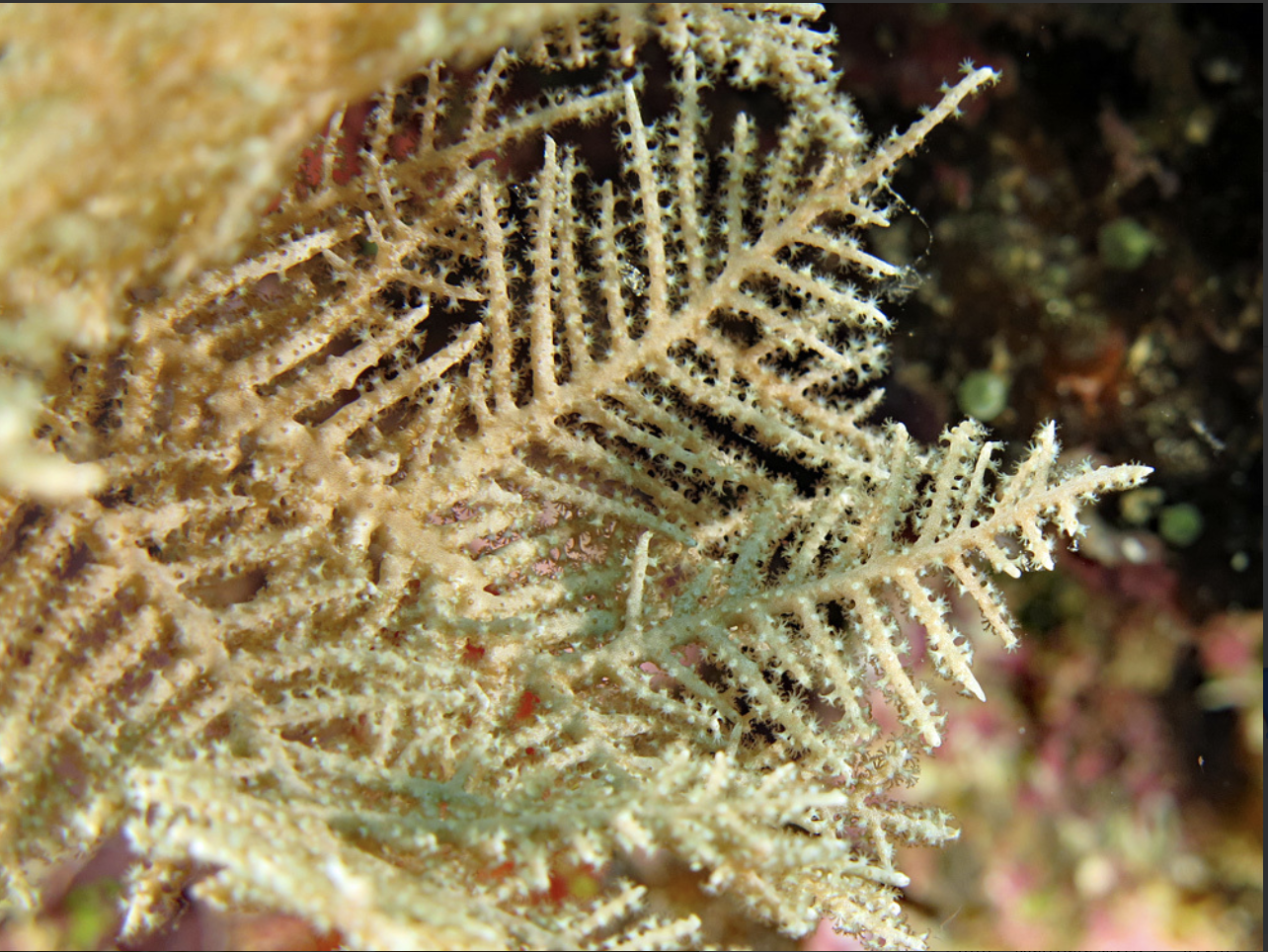
Mopseidae, Ifalukellidae, & Pleurogorgiidae
Mopseidae comprises the other major lineage of Bamboo Corals and is home to a large number of relatively species-poor genera, many of which are endemic to the Southern Hemisphere. Unlike their exclusively deepsea cousin, the mopseids have several members found at shallow depths, such as Zignisis from caves in the Coral Sea, but these are all azooxanthellate and thus absent from the aquarium trade.
The ifalukellids are an obscure group of small Gorgonians that notably produce an axial skeleton of aragonite, a relative rarity within Octocorallia. Plumigorgia is a widespread Indo-Pacific genus with delicate, feathery colonies, and Ifalukella is a Pacific endemic with small, bushy colonies. Both are zooxanthellate and potentially suitable for aquariums, though I suspect these would tolerate international shipping poorly, as they favor very clean and clear habitats exposed to strong, oxygenating currents. A few additional additional genera—Helicogorgia, Stephanogorgia, Aurogorgia, Pleurogorgia—represent isolated lineages, the latter two comprising yet another small Gorgonian family, Pleurogorgiidae.
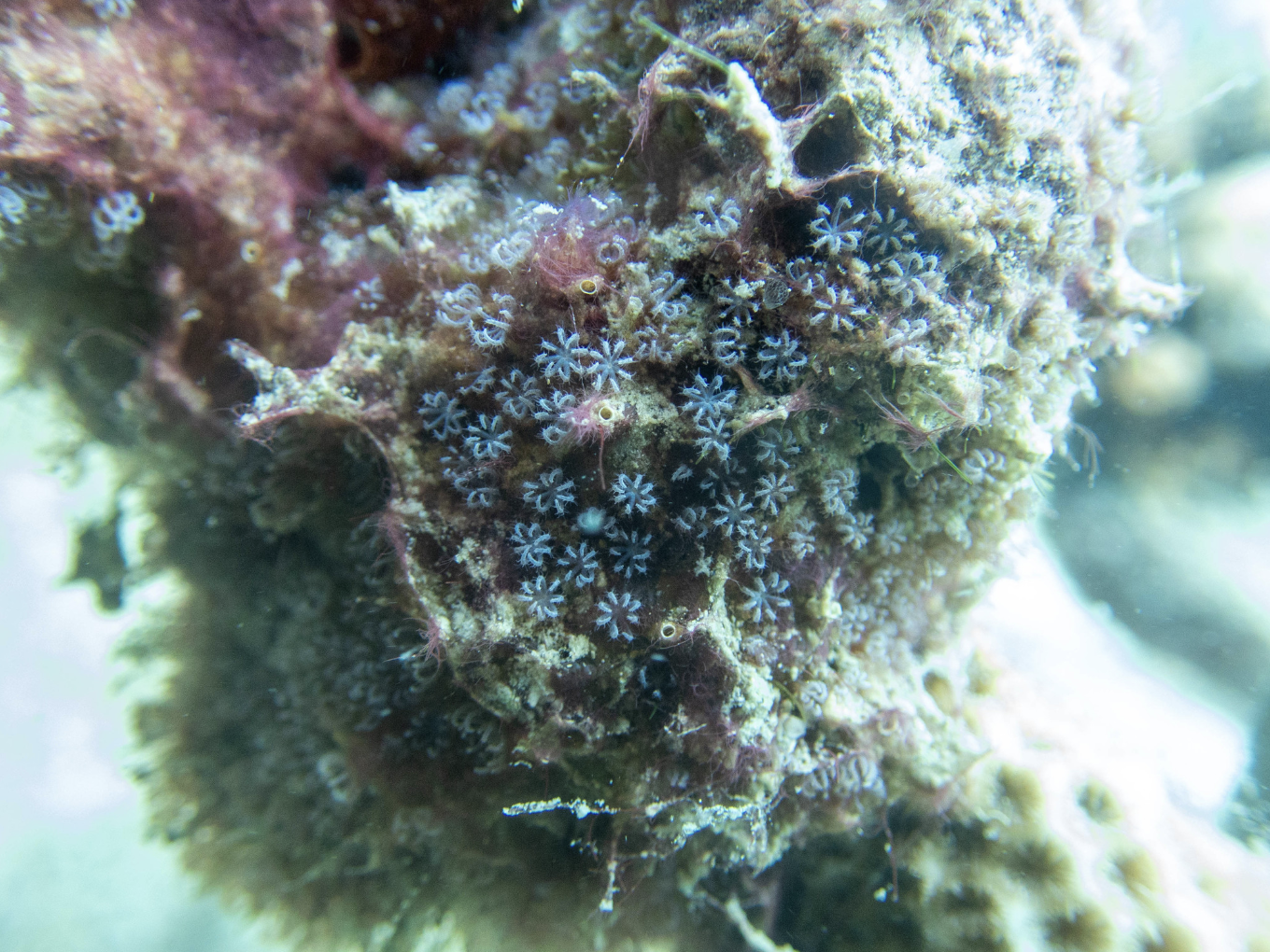
Dendrobrachiidae, Helioporidae, & Aulopsammiidae
We’ve already encountered Dendrobrachia in our exploration of the ex-Holaxonia; the genus includes a handful of widely dispersed species found at moderate depths. Colonies are small and delicate and lacking in sclerites, quite unlike the other groups with gorgonin-based skeletons found in Malacalcyonacea. But what’s perhaps most odd about this genus is where it fits within the evolutionary history of Octocorallia. Dendrobrachia is the unexpected sister lineage of…
Heliopora, the Blue Corals! These are common on Indo-Pacific reefs and often confused with the true Stony Corals on account of their aragonitic skeleton, tinted blue internally in some species due to unmetabolized biliverdin. These were formerly considered a very distinct group of octocoral, coequal with the Sea Pens and the broadly defined Alcyonacea (i.e. inclusive of all Soft Corals & Gorgonians). To instead find them as a highly derived group was one of the major molecular surprises of this revision, albeit one that has been hinted at for many years now.
The aulopsammiids also fit in here, these being smaller, stoloniferous corals with a similar aragonitic composition. Though initially combined within Helioporidae in the McFadden et al revision, the lead author has subsequently split these off once again as a separate family on the WoRMS database. Nanipora is a zooxanthellate species from the West Pacific, famously discovered in 2015, having previously been noted as an occasional hitchhiker on aquarium corals. Epiphaxum is the only other member and is restricted to moderate depths, with a fossil record as far back as the Cretaceous.
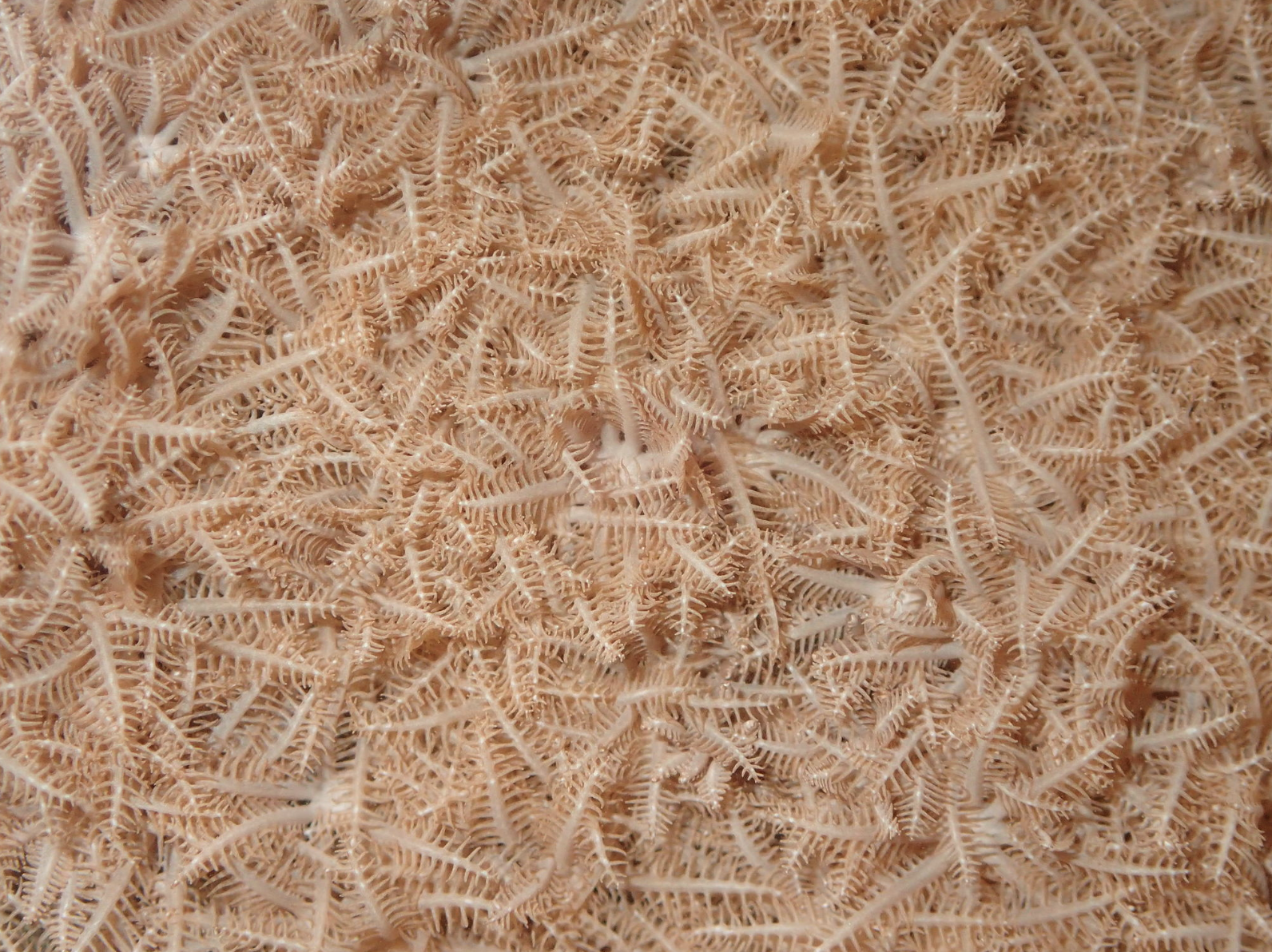
Briareidae & Erythropodiidae
We’ve thus far encountered 3 major clades in this order, but the remainder of the Scleralcyonacea comprises a morphologically heterogeneous 4th clade, home to encrusting and branching ex-Scleraxonia genera, a few odd Soft Corals, and even one last Bamboo Coral. There is no rhyme or reason to this, no obvious diagnostic trait or traits pointing towards their shared evolutionary origin; rather, molecular data suggests these are related, and that’ll have to be good enough for now.
The Briareum Star Polyps are a familiar group to aquarists thanks to the common West Pacific species B. violaceum, though at least a couple other species occur in the Indo-Pacific. The presence of B. asbestimum in the tropical West Atlantic marks this as one of the few octocoral genera with a circumtropical distribution. These corals feature a bilayered construction, with an outer cortex and inner medulla, the latter layer being penetrated by gastrovascular canals and each with distinct sclerite types.
Another closely related genus with a similar morphology and a circumtropical distribution is Erythropodium, best known for the so-called Encrusting Gorgonian E. caribaeorum, a bit of an aquarium nuisance due to its eager growth rate. Less well known are its apparent sister species, E. taoyuanensis (described from Taiwan in 2022) and E. hicksoni (endemic to subtropical Australia). These differ from Briareum in terms of their sclerite morphology and by having a well-defined boundary layer of gastrovascular canals separating the cortex and medulla.
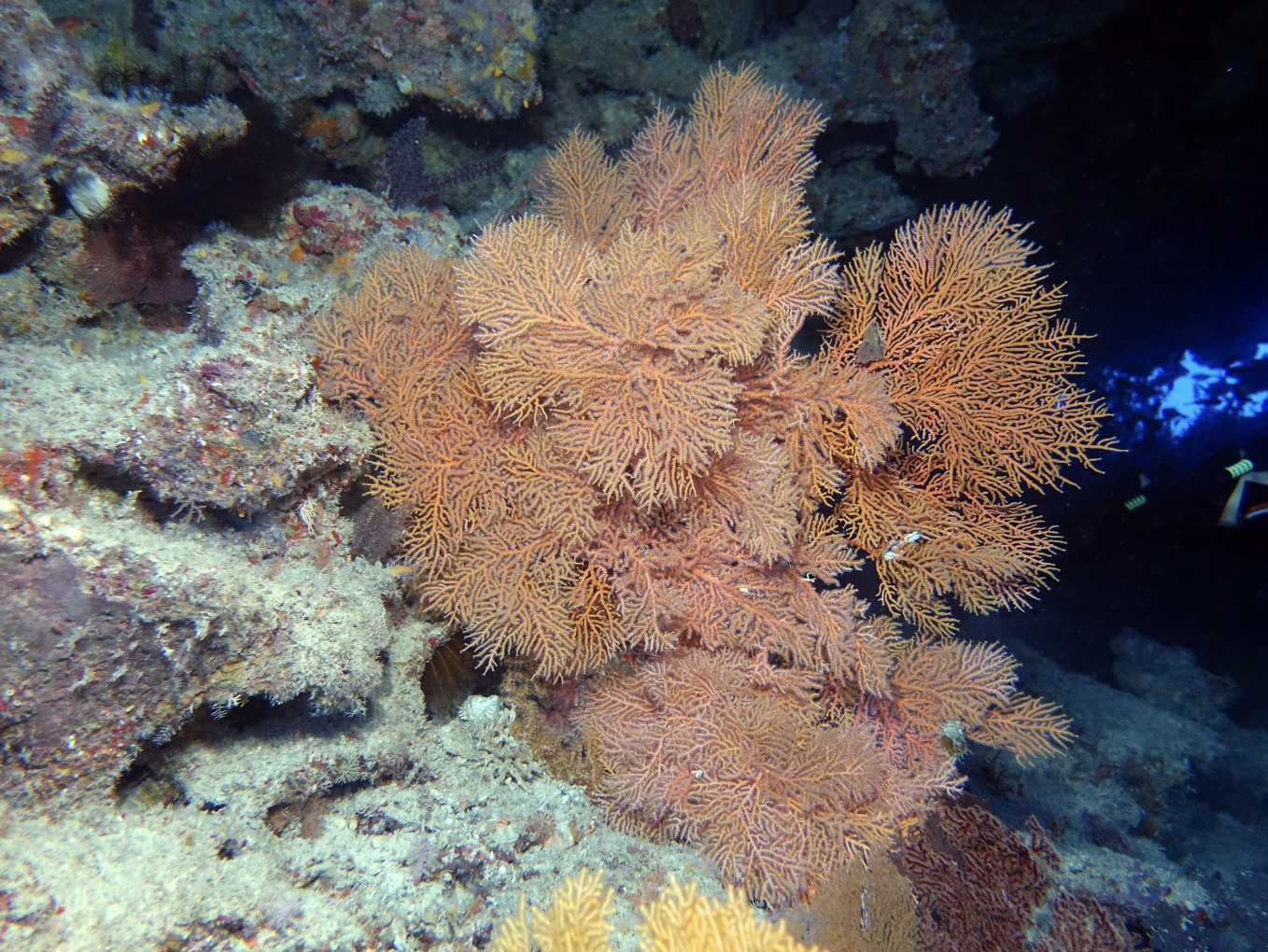
Spongiodermidae, Ideogorgiidae, Parisididae, & Sarcodictyonidae
The spongiodermids are small Gorgonians found mostly in shallow habitats throughout the Atlantic, including Diodogorgia nodulifera, a common azooxanthellate species harvested for the aquarium trade. These share a similar bilayered construction as Erythropodium, along with somewhat similar radiate sclerites, but are instead assembled into arborescent colonies. Ideogorgiidae, with species in Argentina and South Africa, is also similar, but with an axial skeleton of gorgonin in place of a purely scleritic medulla.
Parisis is a small and widespread genus, occasionally found at divable depths in the Indo-Pacific, with a jointed axial skeleton consisting of solid internodes (formed from fused sclerites) alternating with flexible nodes of gorgonin (infused with sclerites). There is thus a strong resemblance to the distantly related Isis hippuris, a fact alluded to in its name.
The sarcodictyonids are a seemingly unremarkable group, with a couple coldwater genera of stoloniferous or encrusting corals, including one species commonly seen by divers in the Mediterranean, Sarcodictyon catenatum. Molecular data unites all of these families together with Briareum and Erythropodium.
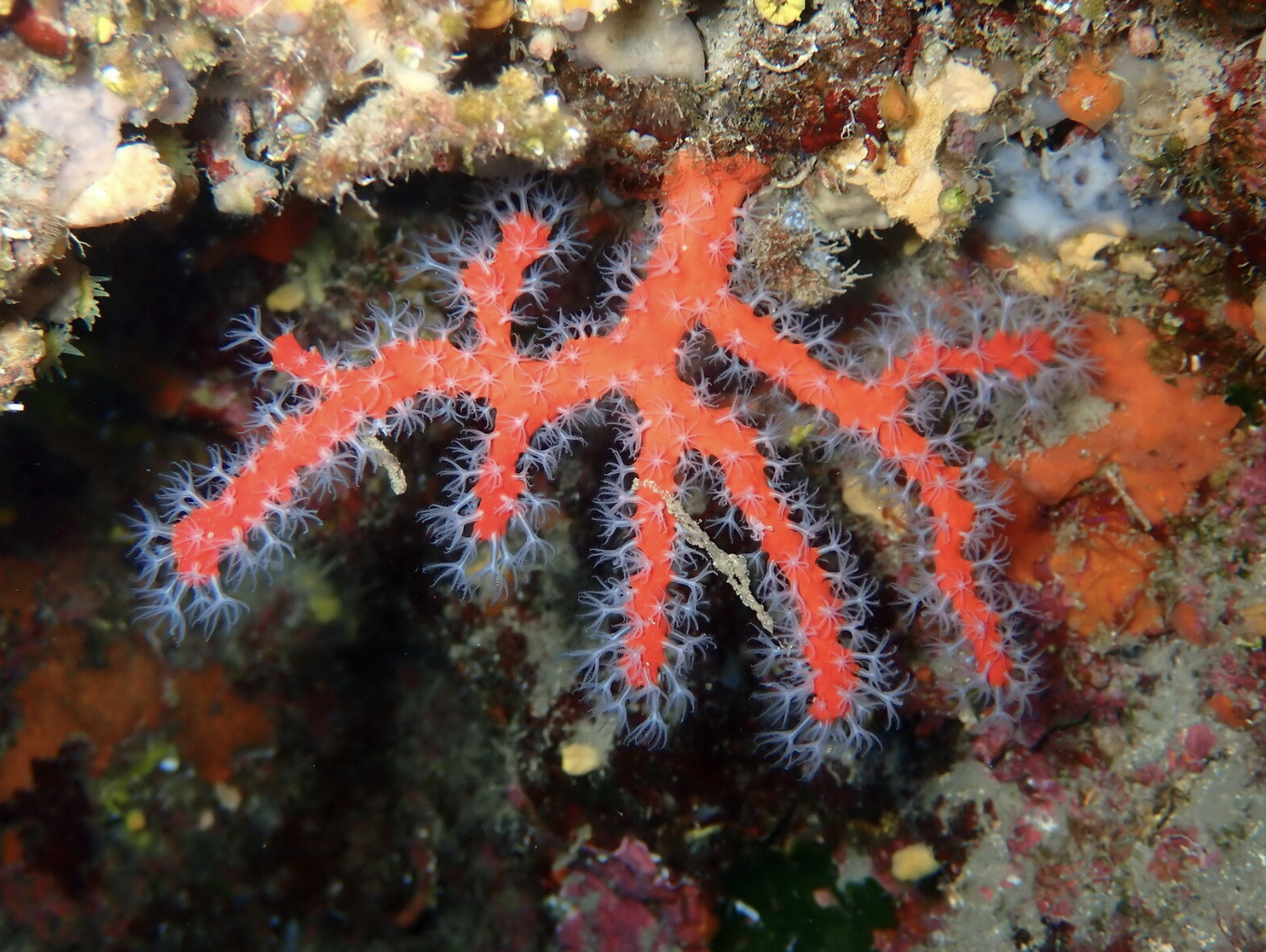
Coralliidae & Parasphaerascleridae
The presence of radiate sclerites is a common theme in many of these families, and this is especially true of the coralliids and parasphaerasclerids. For the Mediterranean’s famed Precious Coral Corallium rubrum, these sclerites fuse into a rigid skeleton that can be polished into a biological gemstone, and it has some truly enormous cousins from the deepsea, like the Paragorgia Bubblegum Corals, which can reach several meters across. The family is also home to some commonly seen toadstool-shaped species in the deepsea, like Anthomastus, as well as the more derived Bathyalcyon, formed from a single large polyp with many smaller siphnozooids.
The azooxanthellate Paraminabea Carrot Corals are a fairly common corallid in certain tropical Indo-Pacific habitats and periodically find themselves collected for the aquarium trade. These closely approximate the appearance of another group in this region, Parasphaerasclera, despite belonging to distinct lineages.
Chelidonisididae
Jointed Gorgonians have a habitat of appearing and reappearing throughout octocoral evolution, and here we are again with Chelidonisis. This little deepwater genus closely resembles the appearance of the keratoisidids, but with radiate sclerites instead of that group’s rods and spindles, illustrating yet another example where sclerite morphology is more informative than colony shape—a similar phenomenon also shows up in certain similarly shaped but distantly related Stony Corals (e.g. Faviidae vs Merulinidae).
And finally we have run out of octocorals to discuss… or have we.
Incertae sedis
The McFadden et al study is decades in the making, requiring the slow accrual of specimens suitable for genetic sequencing. Given how many obscure octocorals exist in the world, it should come as little surprise that not every genus was available for study. The backbone of this phylogeny utilized a large number of genes derived from a relatively small number of genera, corresponding to as many higher-level groups as possible. And then this was filled in further by comparing this data with a single gene (mtMutS) from as many species as possible, to arrive upon a reasonably fleshed out hypothesis for the entire Octocorallia.
But there are still significant gaps to fill, and preliminary evidence supports there likely being several more families awaiting description (e.g. Elenanthus violaceus, a vibrant Soft Coral described from the Kuril Islands in 2020). No less than 46 genera and 2 families remain unstudied, including the enigmatic protoalcyonarian Haimea and the alleged gastraxonacean Pseudogorgia. Most of these genera are obscure creatures from the deep or from polar latitudes and occupy a broad range of colony shapes, from arborescent Soft Corals (Chondronephthya fusca) to planar fans (Briareopsis aegeon) to heavily armored stoloniferous forms (Scleranthelia, Tesseranthelia), plus many, many obscure Gorgonians.
There are also still several shallow, tropical species in need of study. Stereosoma celebense is thought to refer to a common aquarium species, the Waving Hand Coral, though it’s not apparent that anyone has ever bothered to confirm the morphological details mentioned in the description, most notably the presence of a gorgonin-like material in the encrusting base. Alcyonium (=Metalcyonium) verseveldti is presently misclassified in its otherwise temperate-water genus, and you’ll also see it regularly misidentified by aquarists as a Sympodium, but it’s rightful place is actually amongst the cladiellids, where it (and allegedly a few undescribed species) are in the process of being given a new genus. Other intriguing unknowns include the gorgeous Moolabalia polyps of subtropical Australia and the ethereal Canarya polyps from the Canary Islands, but there’s no shortage of nameless stoloniferous corals on reefs. Who knows what other exciting finds yet await within the Octocorallia.
About the author
Joe Rowlett is the author of Indo-Pacific Corals and studies marine biogeography and speciation. He is a former aquarist and has written extensively for aquarium publications.


